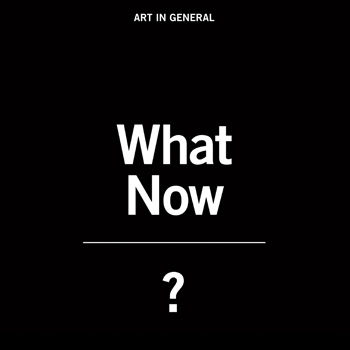Vera List Center Symposium: What Now? 2014 Collaboration & Collectivity
Friday, April 4, 4:30–7:30 p.m.
Saturday, April 5, 11:00 a.m.–4:00 p.m.
The New School, Anna-Maria and Stephen Kellen Auditorium
66 Fifth Avenue
New York City
Free admission
What Now? 2014 is a two-day symposium organized by Art in General in collaboration with the Vera List Center for Art and Politics. This launches a new series of annual conferences, called to investigate issues arising in the field of contemporary art. This year’s conference is dedicated to Collaboration and Collectivity and organized around three sessions spanning Friday and Saturday, with a keynote lecture presented on Friday evening, delivered by Charles Esche, which will be live streamed here.
In the spirit of philosopher Hannah Arendt, who taught at The New School for many years, the symposium examines collaboration through a politics of place—how the way in which we live and work together directly creates the political landscape we inhabit. In Arendt’s words, “To live together in the world means essentially that a world of things is between those who have it in common, as a table is located between those who sit around it; the world, like every in-between, relates and separates men at the same time.”
Taking this central question of how we work together and how we form communities, What Now? 2014 explores collaborations between artists and institutions while examining the modes and methods of collective action, including positions of disengagement. With collaboration becoming a more prominent form of practice for both artists and institutions, the symposium questions some of the reasons behind this phenomenon—from the desires to produce new projects, knowledge, or research to developing new institutional structures. Through a variety of presentations featuring scholars, academics, artists, curators, and writers, What Now? 2014 aims to generate new thinking around these issues, including authorship and authenticity as well as modes of collaboration as strategies for social change.
Program
Friday, April 4
4:30–6:00 p.m.
Session 1: Collective Authorship
In terms of institutional collaboration, the session will look at examples of collaboration that involve putting aside one central curatorial/authorial/artistic voice in order to take part in the exchange of ideas and the creation of joint projects. In terms of this collective way of working, how do individuals and/or organizations reach a creative consensus, and how are issues such as diverse local contexts, languages, time differences, and institutional capacities handled?
Is an institution the coming together of people towards shared aims, supported by the creation of a legal entity and situated in a certain place at particular time, or can it be framed as simply the notion of a shared voice? When and what happens in the shift between collective and institution and how does this difference reflect and shape their roles?
This panel will use Art in General’s newly formed partnership APRIL (Art in General, NY; Beirut, Cairo; CAC Derry-Londonderry; FormContent, London; Kunsthalle Lissabon, Lisbon) as the springboard to expand on the central question of their first meeting, What is an Institution?
Moderator: Sarah Rifky, Co-Director, Beirut in Cairo, Egypt
Participants:
Anne Barlow, Director, Art in General, New York
Johan Lundh, Co-Director, Institute of Modern Art, Brisbane, Australia
Jens Maier Rothe, Co-Director, Beirut in Cairo, Egypt
Luis Silva/João Mourão, Co-Directors, Kunsthalle Lissabon, Portugal
Pieternel Vermoortel, Co-Founder and Director, FormContent, London, England
6:30–7:30 p.m.
Keynote lecture by Charles Esche (livestream here)
Saturday, April 5
11:00–1:00 p.m.
Session 2: Collective Bargaining
A panel of artists, curators, and academics will discuss the different aspects of collective work. Whether a group of individuals answering to a single name or namelessly acting together, what are the different structures of group entities and how do these structures affect the ability to provoke heightened self-awareness of our own social sphere?
By exploring the vision of the collective as a unified body in which individuals are drawn into an anonymous mass alongside the notion of collective action with its multidirectional and unpredictable group dynamics, the panel will discuss the different modes of collaboration as artistic strategies for social change.
Moderator: TBD
Participants:
Robert Sember, Ultra-Red
Tercerunquinto, a collective project of Mexican artists Julio Castro Carreón, Gabriel Cázares Salas, and Rolando Flores Tovar
The Yes Men
1:00–2:00 p.m.
Lunch Break
2:00–4:00 p.m.
Session 3: Collective (Dis)engagement
Cultural or academic boycott is a strategy of protest and change often advocated by cultural producers, artists, and members of the creative industries. The boycott of South Africa during Apartheid is usually referenced as a particularly influential and successful example. In our contemporary moment, we ask for an appropriate form of engagement to affect change in a situation, government or institution that is not necessarily our own, whose ethics, however, is considered a source of conflict. As artists are increasingly recognized as producers of cultural, social, and economic capital, how can they leverage this power and act collectively in the most efficient ways to affect political, social, or cultural change?
A panel of artists, curators, and academics offers examples of different tactics that have been employed by groups or collectives to insert different discourses into existing contexts and structures, either by engaging or disengaging with them. What can be accomplished by creating an artist exchange with North Korea, by bringing gay artists’ work to a biennial in St. Petersburg, by not traveling to certain countries or states? A brief summary of the South African boycott from the 1960s to 1990 introduces a discussion on how to align ethical standards of diverse groups of people, how to carve out an impactful role for collective bodies without ignoring the complexity inherent in any situation or site of discordance.
Moderator: Nitin Sawhney, Assistant Professor of Media Studies, School of Media Studies, The New School
Participants:
Sean Jacobs, Assistant Professor of International Affairs, Milano School of International Affairs, Management, and Urban Policy, The New School
Mariam Ghani, artist, Artist-in-Residence, Asian/Pacific/American Institute, New York University
Sergio Muñoz Sarmiento, artist, founder of The Art Law Office, New York
Laura Raicovich, Director of Global Initiatives, Creative Time, New York
Sonja Srdanovic, Master’s candidate in Art History, Tufts University; Editorial Board, CULTURESHUTDOWN.NET
What Now? 2014 is organized by Art in General in collaboration with the Vera List Center for Art and Politics, as part of the center’s curatorial initiative on Alignment.

